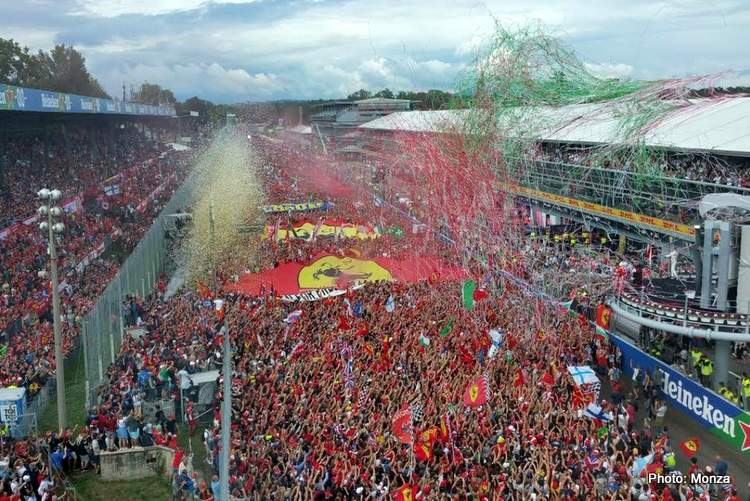75 Years of F1: The Evolution of the F1 Fandom
- Anaya Punde

- Mar 12
- 4 min read
Updated: Jun 21

With the recent release of Season 7 of Netflix’s hit F1 series Drive to Survive and a surge in the sport’s popularity—50% of U.S. adults who identify as F1 fans say they became fans within the past four years—now is the perfect time to examine the evolving landscape of fan culture. In the second instalment of our 75 Years of F1 miniseries, we explore how the F1 fanbase has transformed over the decades, influenced by technological advancements, shifting social dynamics, and the evolving nature of the sport itself. This post delves into the evolution of F1 fan culture, highlighting key eras and the factors that shaped the experiences of supporters around the world.
The Birth of The Spectacle (1950s-1960s)
The origins of F1 in the mid-20th century marked the beginning of an unprecedented connection between fans and the sport. In the 1950s and 1960s, the world of motorsport was predominantly a male-dominated space, with an audience largely comprised of racing enthusiasts and professionals. Fans flocked to racetracks that were stark and practical, built for the raw spectacle of speed and competition rather than the luxury and entertainment-driven experiences of today’s Grand Prix events.
During this era, fan interaction was limited, and the emphasis was placed on the speed and danger of the sport rather than the fan experience. The appearance of iconic cars and legendary drivers like Juan Manuel Fangio and Jim Clark brought excitement to the sport, creating a passionate following that began to form in the stands, laying the foundation for the global F1 fandom that would evolve in the decades to come.
The Growth of the Team Spirit and Loyalty (1970s-1980s)
As the sport grew through the 1970s and 1980s, so too did the fan culture associated with it. The emergence of team and driver rivalries added layers of complexity and engagement for fans. Iconic battles, such as the legendary 1976 rivalry between Niki Lauda and James Hunt, captivated fans, infusing the sport with drama and storytelling that fans could follow and discuss extensively.
This period also witnessed the rise of engineering advancements, leading to teams like Ferrari and McLaren becoming household names. Fans began to connect not just with the drivers but also with their teams. The introduction of team apparel allowed supporters to visibly showcase their allegiances, while expanding media coverage provided deeper insights into the sport and its personalities, strengthening the bond between F1 and its growing fanbase.
The Commercialization Era (1990s-2000s)
As F1 slowly began to become more globalised, F1 embraced commercialization, transforming into a global spectacle driven by corporate investment. Sponsors poured money into teams and drivers, turning the sport into a high-stakes marketing platform. Races expanded to lucrative markets across Asia, the Middle East, and the Americas, catering to a growing international audience and maximizing commercial opportunities.
As media coverage intensified, the sport became more than just a competition—it evolved into an entertainment product. The rise of branded merchandise, hospitality packages, and premium viewing experiences turned F1 into a lifestyle, with races becoming not only sporting events but also luxury social gatherings. Digital advancements further fuelled commercialization, as 24-hour coverage and online engagement created new revenue streams through advertising, exclusive content, and fan subscriptions.
The Globalisation and Digital Revolution (2010s)
The 2010s marked a turning point for F1, as globalization and digital innovation reshaped fan engagement. Social media platforms like Twitter, Instagram, and Facebook bridged geographical divides, allowing fans worldwide to interact with teams, drivers, and each other in real time. This unprecedented accessibility fostered a global F1 community, with drivers sharing their journeys and behind-the-scenes moments, making the sport more personal and relatable. The release of Drive to Survive on Netflix played a pivotal role in this effort, transforming F1 into a global phenomenon by highlighting the drama, personalities, and rivalries behind the sport—ultimately drawing in a new generation of fans from all corners of the world.
The expansion of F1’s digital ecosystem further enhanced global engagement. The official F1 website and mobile apps provided real-time data, interactive content, and exclusive insights, while fantasy leagues and mobile games deepened fan involvement. Streaming services and 24-hour media coverage ensured that fans, regardless of location, could stay immersed in the sport year-round.
The Modern Era: Inclusivity and Environmental Awareness (2020s onward)
As we enter the 2020s, F1 fan culture continues to evolve, with the COVID-19 pandemic accelerating new forms of engagement, particularly between drivers and fans. With races held behind closed doors and strict restrictions in place, drivers turned to social media and streaming platforms to maintain connections with their audiences. Virtual Q&A sessions, esports competitions, and behind-the-scenes content became integral, offering fans unprecedented access to their favourite personalities. The shift toward digital interaction has made F1 more accessible than ever, ensuring that fans worldwide can connect with the sport and its stars, regardless of physical location.
The pandemic also gave rise to online watch parties, fostering a sense of community among fans who could no longer gather at circuits. Teams and drivers embraced digital interaction, with many engaging directly with supporters through live streams and social media, breaking down traditional barriers between the paddock and the fanbase.
F1 fan culture has transformed dramatically over the decades, evolving from a primarily male-driven space into a dynamic international community that celebrates diversity, technology, and a shared passion for racing. As fans continue to engage with the sport in innovative and creative ways, one thing remains clear: the future of F1 fan culture will likely be as rich and multifaceted as its storied past.
Regardless of how it shifts, the heartbeat of F1 will always be the energetic and passionate fan base that fuels the sport. As Formula 1 continues to evolve, it’s safe to say that the love for speed, exhilaration, and fierce competition will guarantee that its fans remain at the core of this incredible journey.




Comments